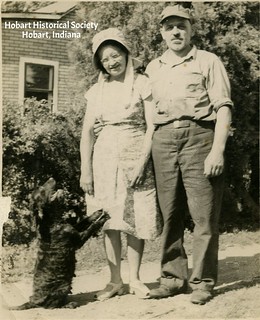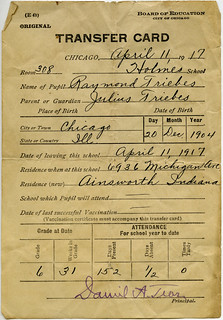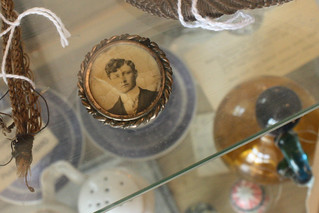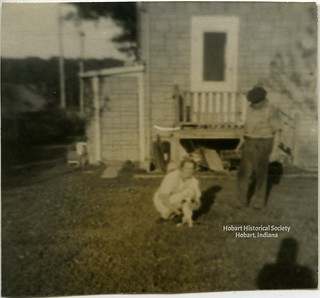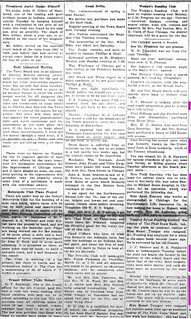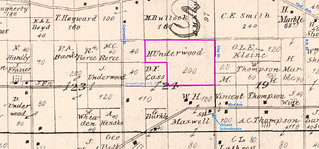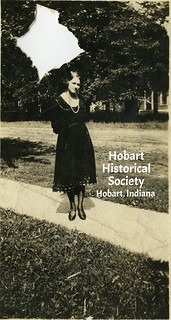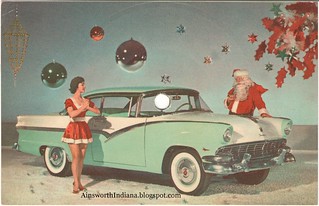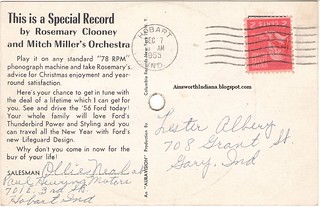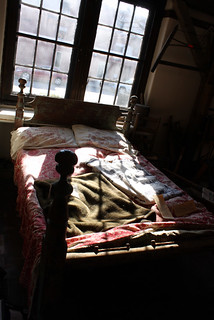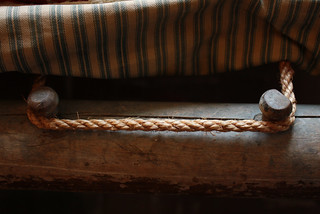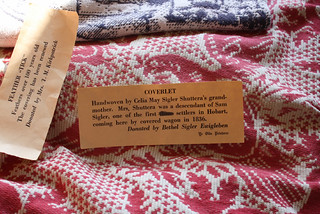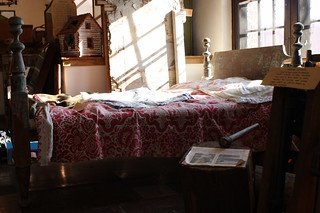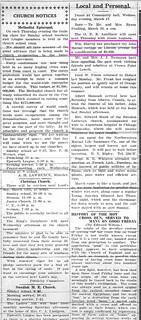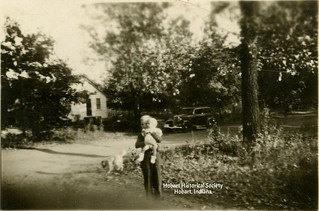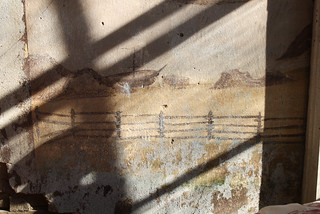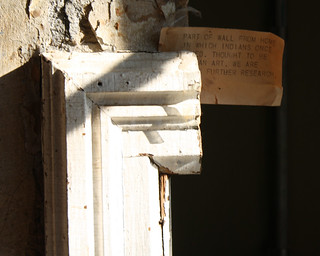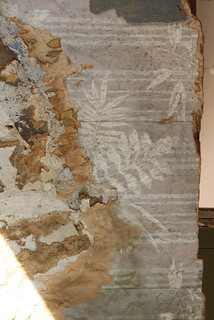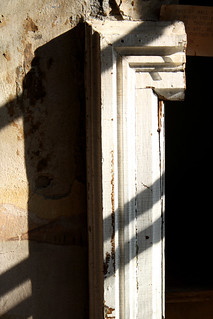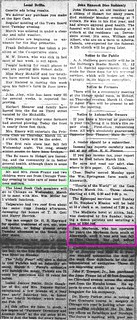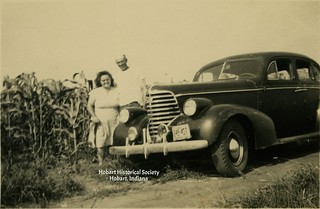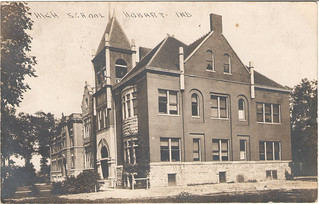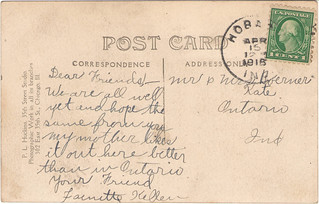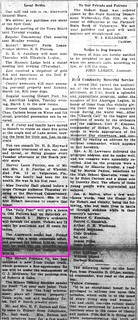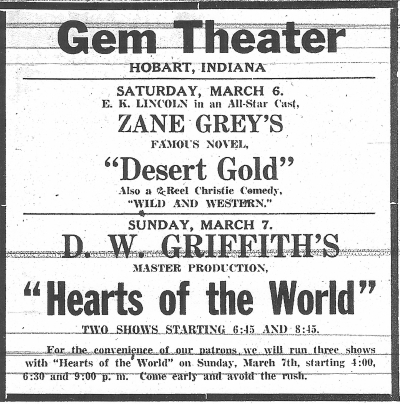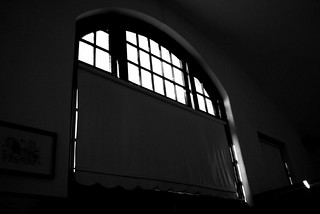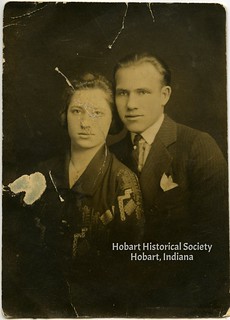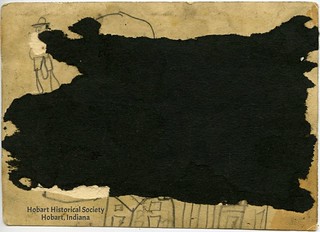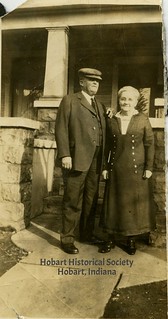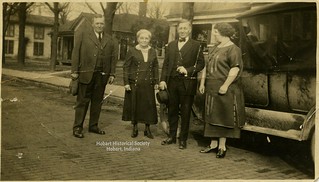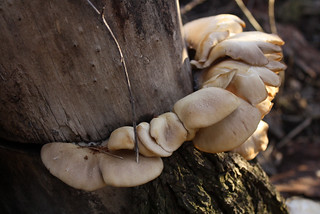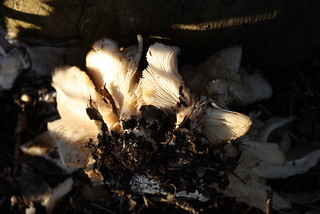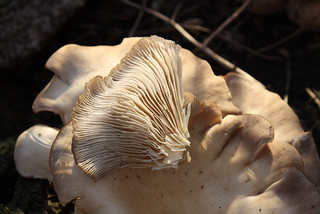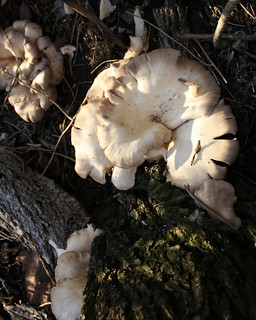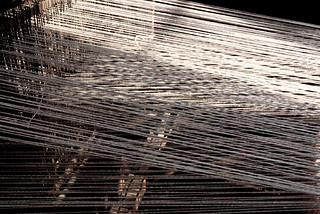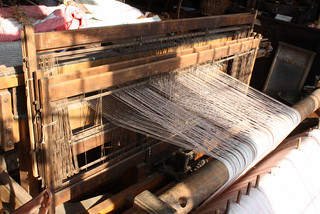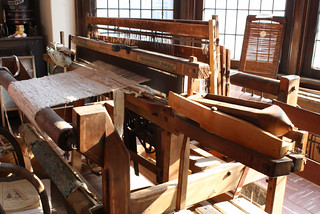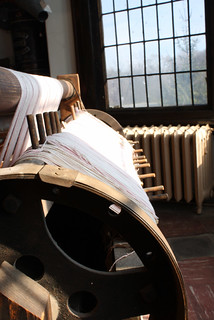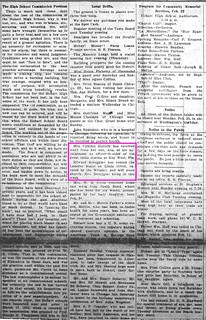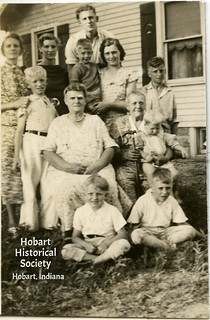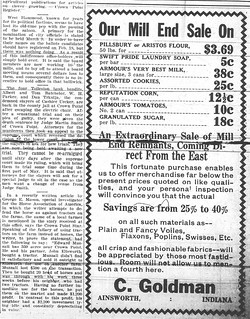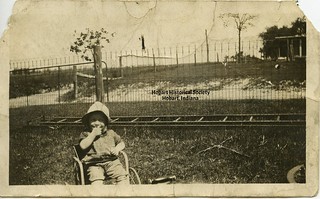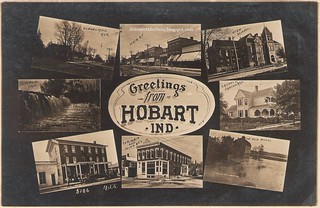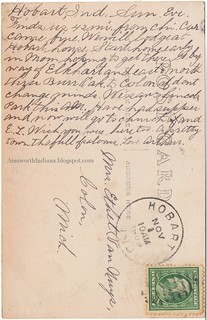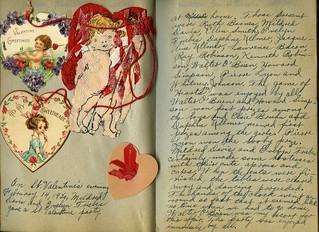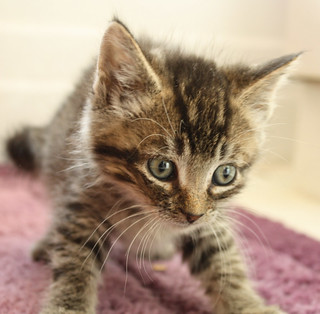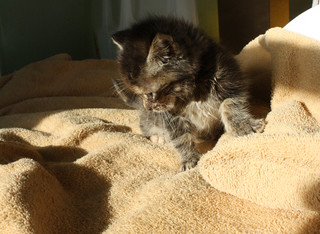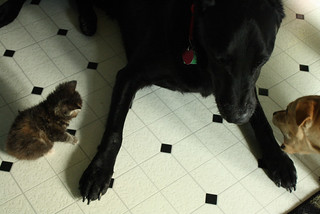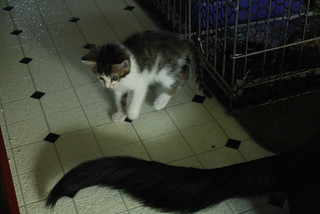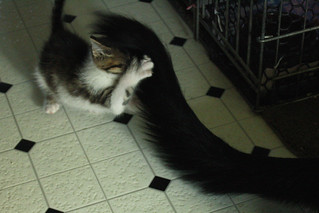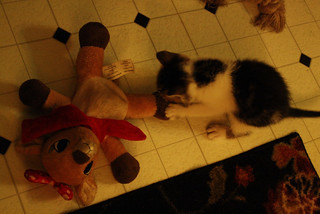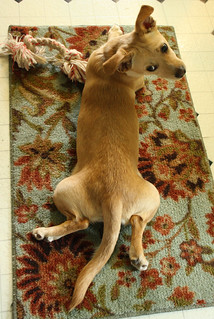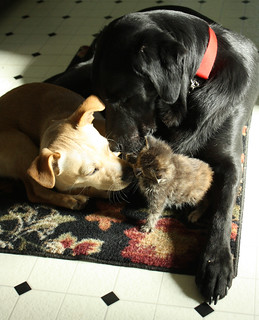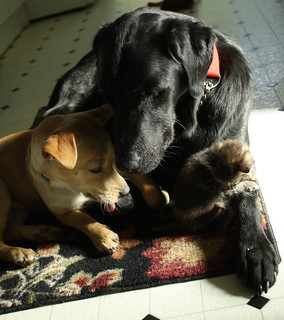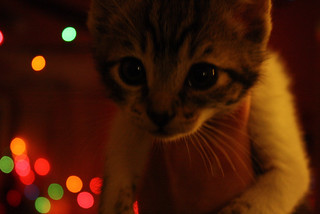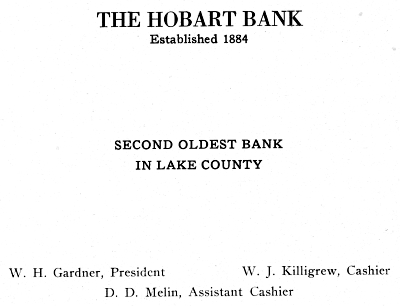 This ad appeared in Hobart High School's Aurora yearbook for 1919.
This ad appeared in Hobart High School's Aurora yearbook for 1919.
Image courtesy of the Hobart Historical Society.It was an ordinary business morning — Wednesday, January 25, 1920 — and in the Hobart Bank, cashier William Killigrew and assistant cashier Deering Melin were going about their ordinary business when an official from the state banking department walked in and told them to close their doors and suspend all business. The bank was under investigation.
The news came as a shock to the two men, as they had no reason to think anything was wrong. The state official explained that the Farmers' State Bank of Valparaiso had likewise just been closed, and there lay the problem: the two banks shared a principal owner, one William H. Gardner of Valparaiso — so it was a case of suspicion by association.
State officials' examination of the Valparaiso bank's books, begun earlier in the week, had turned up a shortfall of $200,000. Examiners believed that bank funds were being used in stock speculation. The Farmers' State Bank cashier, Henry Winneguth, openly confessed to the shortfall; as for President Gardner, he had nothing to say — he was nowhere to be found.
The news, and the shock, spread locally. William Killigrew published a notice in the
News asking for Hobart Bank patrons' "patience and good will until matters [were] straightened out." The
Gazette had this to say:
Wm. J. Killigrew, the cashier, has been connected with the Hobart bank for some ten years, and D.D. Melin, the assistant cashier, for the past eight years. They have always retained the confidence of the general public, and through this confidence the bank has grown nicely, much to the credit of these two young men and the town. The Hobart bank was established here as a private bank in 1884 by the present owner's father, and was counted as solid as any institution.
By Friday, Mr. Gardner had turned up and surrendered all his property — hundreds of shares of stock, including all his stock in the Hobart Bank, his "magnificent home and all its luxurious fixtures" and "half a dozen other pieces of property"; Cashier Winneguth had also surrendered his home and personal property. Between the value of those assets and "financial soundness of [the bank's] backers," by the end of the week the Farmers' State Bank failure was apparently headed for a happy ending.
Meanwhile, the Hobart Bank, with a shortage of $46,000, faced either a winding up of its affairs with a possible loss of 30 percent to depositors, or a reorganization that would allow it to continue business with no loss to depositors. On Sunday morning a number of depositors, determined to reorganize, gathered at the bank and worked out the details with the help of state banking examiners. Quickly ("in ten minutes," according to one report) depositors bought $50,000 worth of stock, more than making up the shortage. By Tuesday morning, the Hobart Bank was open for business again.
♦ ♦ ♦Many of those involved in the reorganization are acquaintances of ours. The bank's new officers were William Stommel (president); John J. Wood (vice-president); William Killigrew (cashier); and Deering Melin (assistant cashier). Its directors were Calvin Shearer, Emil Scharbach, Sherman Henderson, John Stocker and John Hillman. All officers (except Deering Melin) and directors were shareholders; additional shareholders were Andrew Melin, Armin Mackeldey, Paul Emery, Fred Rose, Lawrence Traeger, Alex Boyd, John Killigrew, Philip Thompson, Harry Parker, Siegfried Baumer, Robert Scholler, and Simeon Bullock.
Sources:
♦ "Bank Shortage to Be Made Good by the Backers." Kokomo Daily Tribune 27 Feb. 1920. http://www.newspaperarchive.com (accessed 12/7/12).
♦ "Doors of Hobart Bank Closed Wednesday Morning." Hobart News 26 Feb. 1920.
♦ "Hobart Bank Closed Wednesday by State Officials." Hobart Gazette 27 Feb. 1920.
♦ "Hobart Bank Involved in Crash, Will Reopen." Elkhart Review 1 Mar. 1920. http://www.newspaperarchive.com (accessed 12/7/12).
♦ "Hobart Bank Opened Tuesday." Hobart Gazette 5 Mar. 1920.
♦ "Hobart Bank Opens Under Reorganization." Hobart News 4 Mar. 1920.
♦ "State Auditor Closes Up Two Indiana Banks." Kokomo Daily Tribune 26 Feb. 1920. http://www.newspaperarchive.com (accessed 12/7/12).
♦ "Two Indiana Banks Closed By Auditor Shortage $200,000." Logansport Daily Tribune 26 Feb. 1920. http://www.newspaperarchive.com (accessed 12/7/12).
